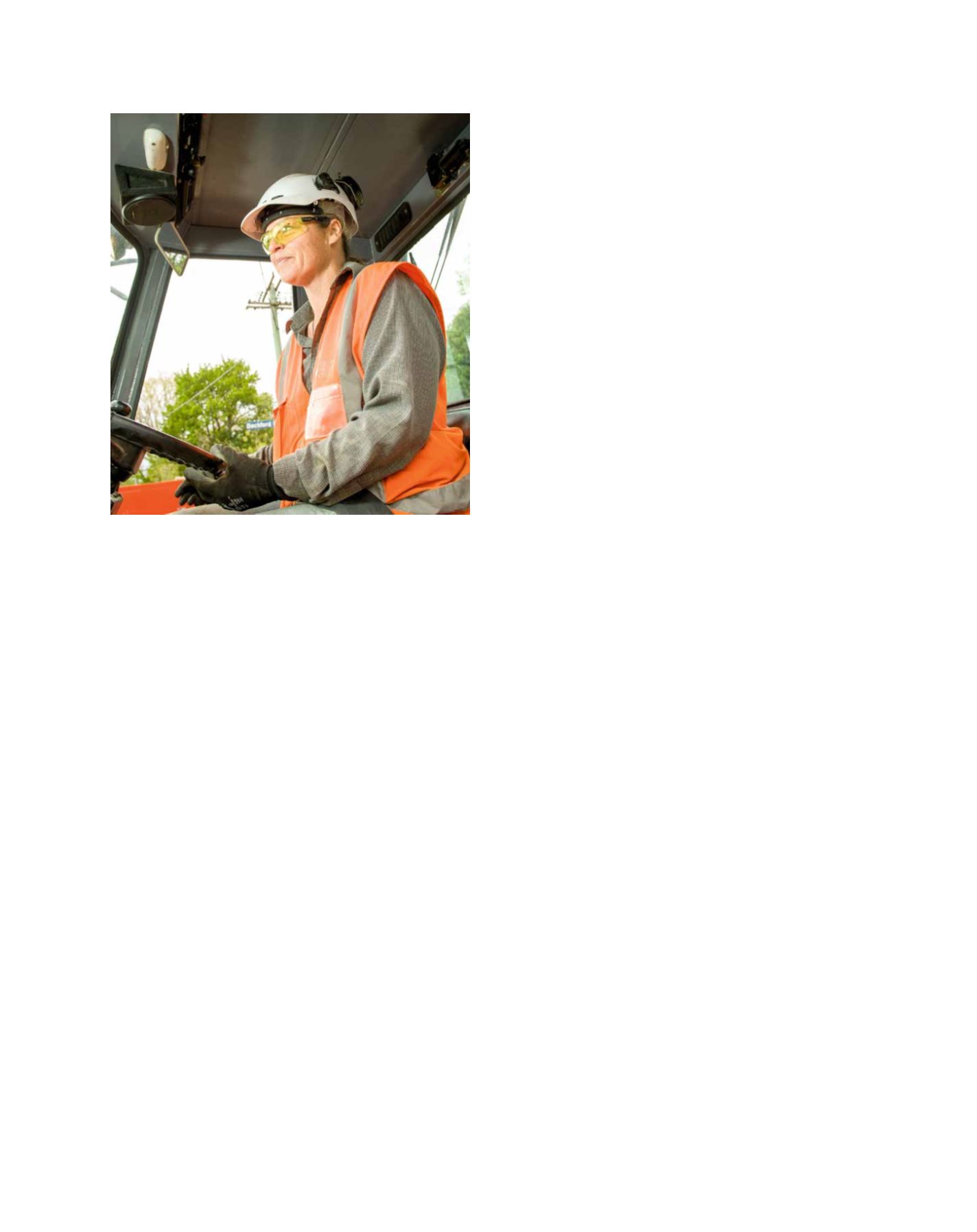

[
] 68
has published profiles of women in a range of sectors, from
aviation to winemaking. These stories show the diversity and
scope of women’s leadership; they prove that women have the
skills, the drive and the tenacity to succeed.
The Ministry for Women also contributed to the work of
DiverseNZ Inc., a private sector cooperative venture that
developed a platform of knowledge and practical tools for
businesses to leverage diversity. Building on this momentum,
in November 2015, Global Women launched Champions for
Change, a collaboration of New Zealand chief executives and
chairs from the public and private sectors who are commit-
ted to raising the value of diversity and inclusion within
their organizations and actively promoting the concept
among their peers.
Despite gaining qualifications at a greater rate than men,
women’s skills are not being translated into greater career
and development opportunities. Women are over-repre-
sented in minimum wage jobs and a substantial proportion
of both women (47 per cent) and men (53 per cent) work
in occupations that are at least 70 per cent dominated by
their own gender.
3
Better utilization of women’s talents in
the labour force will help meet New Zealand’s current and
projected skill shortages.
The Ministry for Women has undertaken two seminal
research projects on gender role stereotyping and prejudice
in the context of women’s career progression.
Realising the
opportunity: Addressing New Zealand’s leadership pipeline
by attracting and retaining talented women
4
identifies why
women ‘drop out’ of the leadership pipeline and how employ-
ers can support their retention.
Inspiring action: Action plans
and research to help you attract and retain talented women
5
is a quick reference to resources that assist organizations
to address unconscious bias and identify practical steps to
improve women’s career pathways.
Government is working on initiatives to attract and retain
priority groups of women in occupations where high growth is
projected and where women are currently underrepresented,
in particular science, technology, engineering and mathemat-
ics (STEM) and information and communications technology
(ICT) industries, and construction and trades.
Government is working with education providers and
employers to increase opportunities for women in the STEM
and ICT industries. Launched in 2014,
A Nation of Curious
Minds/He Whenua Hihiri I te Mahara: A National Strategic Plan
for Science in Society
6
encourages and enables better engage-
ment with science and technology across New Zealand society.
This plan includes an action to increase girls’ participation in
science and ICT.
In 2014 the Government allocated $28.6 million over
four years for an ICT Graduate School programme. Three
schools are being established in Auckland, Wellington and
Christchurch. The initiative is committed to increasing the
diversity of ICT students and all schools will focus on increas-
ing the participation of women.
The Ministry of Business, Innovation and Employment, the
Ministry for Women, the Tertiary Education Commission and
industry training organizations are also working together to
increase trades training opportunities for women including
work to encourage Ma¯ ori and Pacific women into the Ma¯ ori
and Pacific Trades Training programme. Another initia-
tive, Ultimit, aims to encourage more women to consider
career options within the electricity supply industry by offer-
ing taster courses and raising awareness of opportunities.
‘Got A Trade Got It Made’ promotes careers in trades and
services. The programme’s website highlights the achieve-
ments of young New Zealand apprentices and various career
opportunities available to women are profiled. Worldskills
New Zealand also promotes the opportunities for and
achievements of women in trades. Regional and national
competitions are held every two years with winners selected
to participate in the Worldskills international competitions.
Following the 2010 and 2011 earthquakes, women’s
employment in Canterbury was negatively affected. At the
same time, demand for trades people increased as the rebuild-
ing process commenced. The Ministry for Women partnered
with a number of industry and community leaders and local
training providers to improve women’s employment and help
meet skill shortages in Canterbury, and to promote the idea
of women in trades. This work included the publication of
B
uilding back better: Utilising women’s labour in the Canterbury
recovery
,
7
a business case for increasing the number of women
in trades in Canterbury;
Growing your trades workforce: How
to attract women to your jobs
,
8
a handbook for trades employ-
ers on how to recruit and retain women; and
Getting it done:
Utilising women’s skills in the workforce
,
9
which shares the
lessons learned and strategies developed in Canterbury.
The Ministry for Women also worked with the Stronger
Canterbury Infrastructure Rebuild Team to raise women’s
visibility in the rebuild.
The Women in Trades Scholarship initiative at Ara
Institute of Technology (formerly Christchurch Polytechnic
Government is working on initiatives to attract and retain women in
occupations such as ICT industries, and construction and trades
Image: Ministry for Women and the Stronger Christchurch Infrastructure Rebuild Team
A B
etter
W
orld
















